Enhanced Cloud Storage Encryption Standard for Security in Distributed Environments
Abstract
:1. Introduction
2. Related Works
3. Materials and Methods
| Algorithm 1 Encryption |
| 1: begin 2: Encrypt(UK, M, n, e, DS, IDU, RID, Km, Kp) 3:← UK (f(M, n, e)) 4: for i ← 1 to n do 5: if [DSi, IDUi, RIDi] == [1, 1, 1] then; 6: Ks ← Km ⊕ Kp; 7: Add Ks user; 8: Upload 9: else 10: Deny; 11: end for 12: Delete Km, Ks; 13: end 14: MS ← (T′, C, DN, EX) 15: end |
| Algorithm 2 Decryption |
| 1: begin 2: Decrypt (Ks, Q Kp, UK,, n, d, DN, Tu) 3: If Ks == 1 then; 4: for each user i, do 5: Km ← Ks⊕ Kp; 6: M ← UK(f(, n, d)); 7: end for 8: else 9: return; 10: end If 11: for u ← 1 to T do 12: if DN ∈ Q then 13: (T′, Q) ← 1; 14: else 15: C(T′, Q) ← 0; 16: end if 17: end for 18: if (T′, Q) == 1 then; 19: C associated with T′ to the user Ui in response 20: end if 21: end |
4. Results
5. Conclusions
Author Contributions
Funding
Data Availability Statement
Acknowledgments
Conflicts of Interest
References
- Nguyen, G.N.; Le Viet, N.H.; Elhoseny, M.; Shankar, K.; Gupta, B.B.; Abd El-Latif, A.A. Secure blockchain enabled Cyber–physical systems in healthcare using deep belief network with ResNet model. J. Parallel Distrib. Comput. 2021, 153, 150–160. [Google Scholar] [CrossRef]
- Mante, R.V.; Bajad, N.R. A study of searchable and auditable attribute based encryption in cloud. In Proceedings of the 2020 5th International Conference on Communication and Electronics Systems (ICCES), Coimbatore, India, 10–12 June 2020; IEEE: Piscataway, NJ, USA, 2021; pp. 1411–1415. [Google Scholar]
- Vennala, A.; Radha, M.; Rohini, M.; Anees Fathima, M.; Lakshmi, P.D. Efficient Privacy-Preserving Certificateless Public Auditing of Data in Cloud Storage. J. Eng. Sci. 2022, 13, 532–541. [Google Scholar]
- Li, R.; Yang, H.; Wang, X.A.; Yi, Z.; Niu, K. Improved Public Auditing System of Cloud Storage Based on BLS Signature. Secur. Commun. Netw. 2022, 2022, 6800216. [Google Scholar] [CrossRef]
- He, J.; Zhang, Z.; Li, M.; Zhu, L.; Hu, J. Provable data integrity of cloud storage service with enhanced security in the internet of things. IEEE Access 2018, 7, 6226–6239. [Google Scholar] [CrossRef]
- Rathore, H.; Mohamed, A.; Guizani, M. A survey of blockchain-enabled cyber-physical systems. Sensors 2020, 20, 282. [Google Scholar] [CrossRef]
- Chen, Y.; Liu, H.; Wang, B.; Sonompil, B.; Ping, Y.; Zhang, Z. A threshold hybrid encryption method for integrity audit without trusted center. J. Cloud Comput. 2021, 10, 3. [Google Scholar] [CrossRef]
- Sajay, K.R.; Babu, S.S.; Vijayalakshmi, Y. Enhancing the security of cloud data using hybrid encryption algorithm. J. Ambient Intell. Humaniz. Comput. 2019, 1–10. [Google Scholar] [CrossRef]
- Latha, K.; Sheela, T. Block based data security and data distribution on multi cloud environment. J. Ambient Intell. Humaniz. Comput. 2019, 1–7. [Google Scholar] [CrossRef]
- Cha, J.; Singh, S.K.; Kim, T.W.; Park, J.H. Blockchain-empowered cloud architecture based on secret sharing for smart city. J. Inf. Secur. Appl. 2021, 57, 102686. [Google Scholar] [CrossRef]
- Viswanath, G.; Krishna, P.V. Hybrid encryption framework for securing big data storage in multi-cloud environment. Evol. Intell. 2021, 14, 691–698. [Google Scholar] [CrossRef]
- Xu, Y.; Ding, L.; Cui, J.; Zhong, H.; Yu, J. PP-CSA: A privacy-preserving cloud storage auditing scheme for data sharing. IEEE Syst. J. 2020, 15, 3730–3739. [Google Scholar] [CrossRef]
- Bera, B.; Saha, S.; Das, A.K.; Vasilakos, A.V. Designing blockchain-based access control protocol in IoT-enabled smart-grid system. IEEE Internet Things J. 2020, 8, 5744–5761. [Google Scholar] [CrossRef]
- Liu, Z.; Wu, Z.; Gan, C.; Zhu, L.; Han, S. Datamix: Efficient privacy-preserving edge-cloud inference. In Proceedings of the Computer Vision–ECCV 2020: 16th European Conference, Glasgow, UK, 23–28 August 2020. [Google Scholar]
- Gudeme, J.R.; Pasupuleti, S.; Kandukuri, R. Certificateless privacy preserving public auditing for dynamic shared data with group user revocation in cloud storage. J. Parallel Distrib. Comput. 2021, 156, 163–175. [Google Scholar] [CrossRef]
- Li, S.; Zhao, S.; Yang, P.; Andriotis, P.; Xu, L.; Sun, Q. Distributed consensus algorithm for events detection in cyber-physical systems. IEEE Internet Things J. 2019, 6, 2299–2308. [Google Scholar] [CrossRef]
- Jalil, B.A.; Hasan, T.M.; Mahmood, G.S.; Abed, H.N. A secure and efficient public auditing system of cloud storage based on BLS signature and automatic blocker protocol. J. King Saud Univ. Comput. Inf. Sci. 2022, 34, 4008–4021. [Google Scholar] [CrossRef]
- Liu, Q.; Wang, G.; Wu, J. An efficient privacy preserving keyword search scheme in cloud computing. In Proceedings of the 2009 International Conference on Computational Science and Engineering, Vancouver, BC, Canada, 29–31 August 2009. [Google Scholar]
- Babu, G. Secure Data Sharing and Identity Based Integrity Auditing with Hiding Privacy Information in Cloud. Cikitusi J. Multidiscip. Res. 2019, 6, 91–96. [Google Scholar]
- Ma, H.; Zhang, Z. A new private information encryption method in internet of things under cloud computing environment. Wirel. Commun. Mob. Comput. 2020, 2020, 8810987. [Google Scholar] [CrossRef]
- Ram Prashath, R.; Srineeladevi, K. Inspecting Cloud Storage System for Secure Data Forwarding Using Advanced Encryption Standard. Int. J. Res. Appl. Sci. Eng. Technol. 2022, 10, 110–112. [Google Scholar]
- Shi, E.; Stefanov, E.; Papamanthou, C. Practical dynamic proofs of retrievability. In Proceedings of the 2013 ACM SIGSAC Conference on Computer & Communications Security, Berlin Germany, 4–8 November 2013; pp. 325–336. [Google Scholar]
- Wang, Y.; Lou, X.; Fan, Z.; Wang, S.; Huang, G. Verifiable Multi-Dimensional (t, n) Threshold Quantum Secret Sharing Based on Quantum Walk. Int. J. Theor. Phys. 2022, 61, 24. [Google Scholar] [CrossRef]
- Dhiman, G.; Rashid, J.; Kim, J.; Viriyasitavat, W.; Gulati, K. Privacy for healthcare data using the byzantine consensus method. IETE J. Res. 2022, 1–12. [Google Scholar] [CrossRef]
- Mittal, S.; Bansal, A.; Gupta, D.; Turabieh, H.; Elarabawy, M.M.; Bitsue, Z.K. Using Identity-Based Cryptography as a Foundation for an Effective and Secure Cloud Model for E-Health. Comput. Intell. Neurosci. 2022, 2022, 7016554. [Google Scholar] [CrossRef] [PubMed]
- Uppal, M.; Gupta, D.; Juneja, S.; Sulaiman, A.; Rajab, K.; Rajab, A.; Elmagzoub, M.A.; Shaikh, A. Cloud-Based Fault Prediction for Real-Time Monitoring of Sensor Data in Hospital Environment Using Machine Learning. Sustainability 2022, 14, 11667. [Google Scholar] [CrossRef]
- Singamaneni, K.K.; Muhammad, G.; Al Qahtani, S.A.; Zaki, J. A novel QKD approach to enhance IIOT privacy and computational knacks. Sensors 2022, 22, 6741. [Google Scholar] [CrossRef]
- Juneja, S.; Juneja, A.; Bali, V.; Upadhyay, H. Cyber Security: An Approach to Secure IoT from Cyber Attacks Using Deep Learning. In Industry 4.0, AI, and Data Science; CRC Press: Boca Raton, FL, USA, 2021; pp. 135–146. [Google Scholar]
- Singamaneni, K.K.; Nauman, A.; Viriyasitavat, W.; Hamid, Y.; Anajemba, J.H. An Efficient Hybrid QHCP-ABE Model to Improve Cloud Data Integrity and Confidentiality. Electronics 2022, 11, 3510. [Google Scholar] [CrossRef]
- Uppal, M.; Gupta, D.; Mahmoud, A.; Elmagzoub, M.A.; Sulaiman, A.; Reshan, M.S.A.; Juneja, S. Fault Prediction Recommender Model for IoT Enabled Sensors Based Workplace. Sustainability 2023, 15, 1060. [Google Scholar] [CrossRef]
- Kumar, P.; Kumar, R.; Srivastava, G.; Gupta, G.P.; Tripathi, R.; Gadekallu, T.R.; Xiong, N.N. PPSF: A privacy-preserving and secure framework using blockchain-based machine-learning for IoT-driven smart cities. IEEE Trans. Netw. Sci. Eng. 2021, 8, 2326–2341. [Google Scholar] [CrossRef]
- Alazab, M.; RM, S.P.; Parimala, M.; Maddikunta, P.K.R.; Gadekallu, T.R.; Pham, Q.V. Federated Learning for Cybersecurity: Concepts, Challenges, and Future Directions. IEEE Trans. Ind. Inform. 2021, 18, 3501–3509. [Google Scholar] [CrossRef]
- Wang, T.; Yang, Q.; Shen, X.; Gadekallu, T.R.; Wang, W.; Dev, K. A privacy-enhanced retrieval technology for the cloud-assisted internet of things. IEEE Trans. Ind. Inform. 2021, 18, 4981–4989. [Google Scholar] [CrossRef]
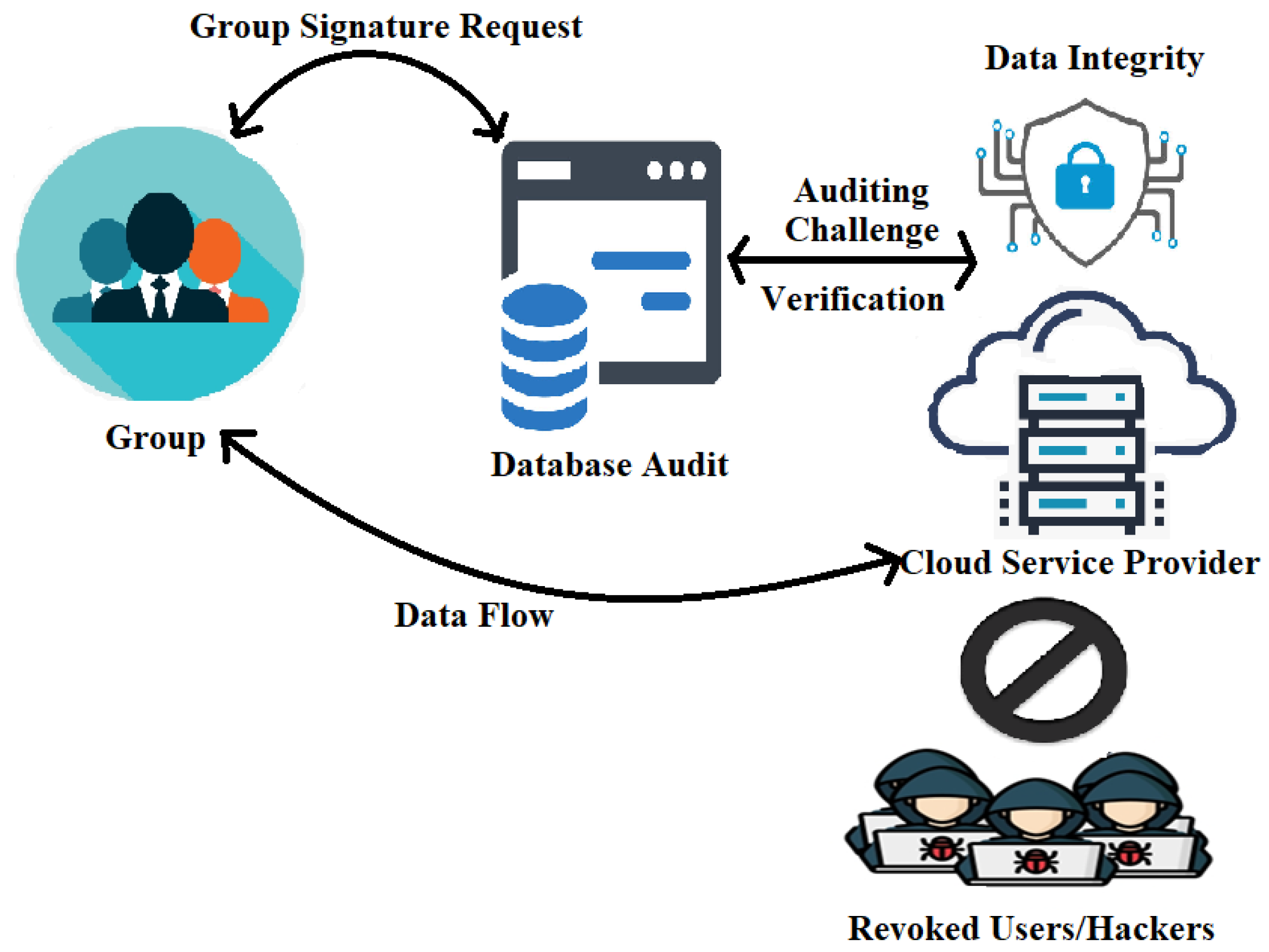
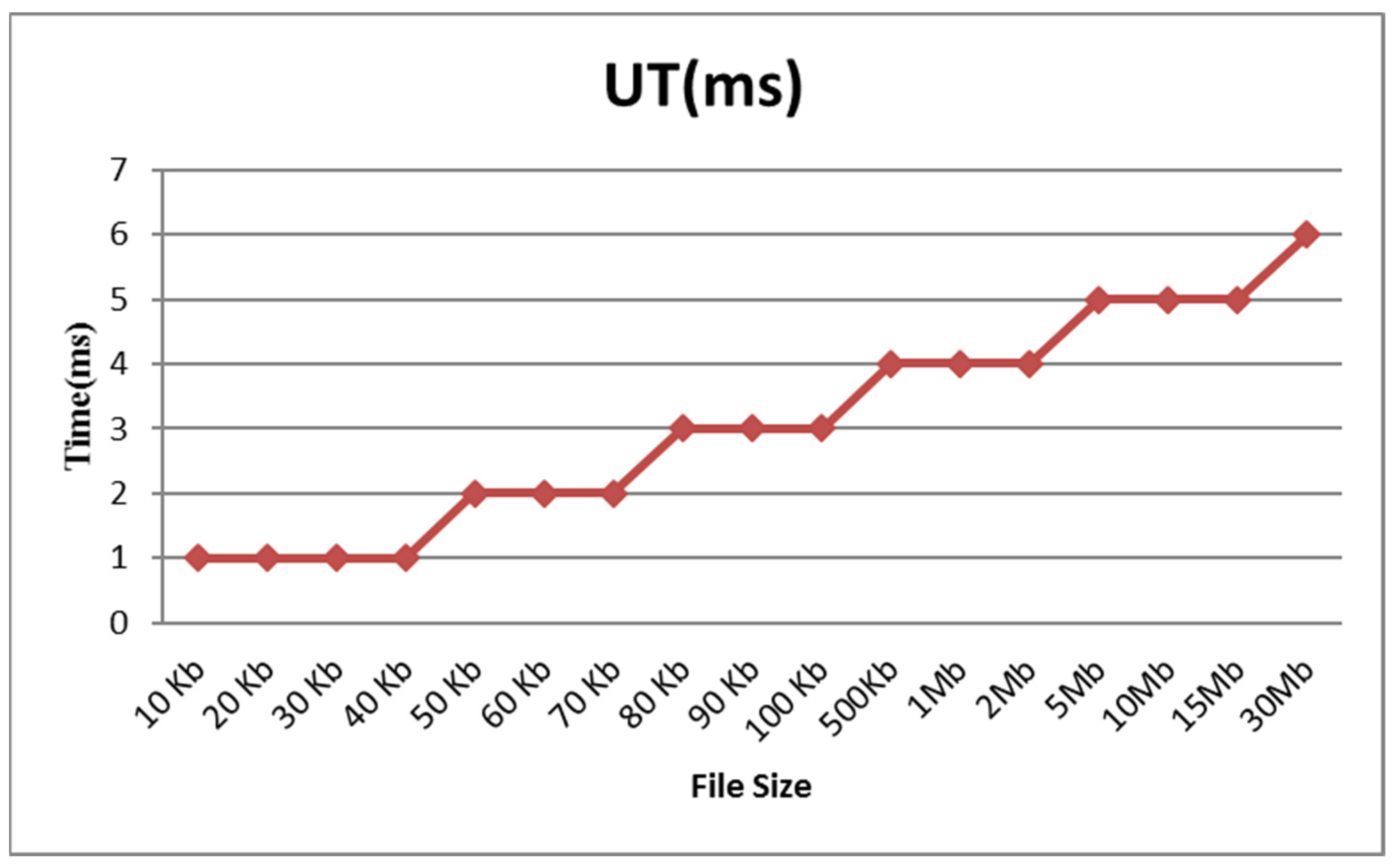
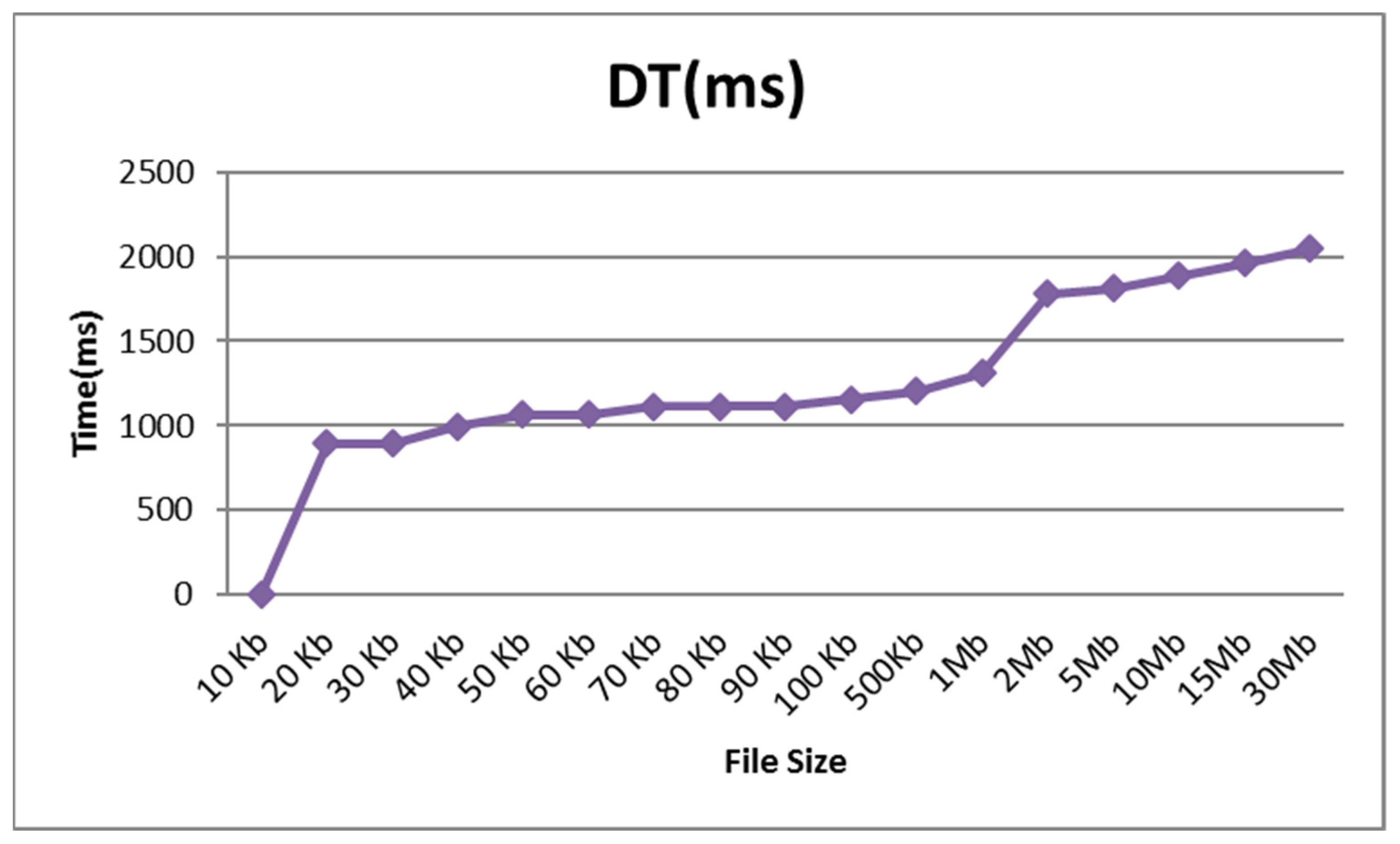
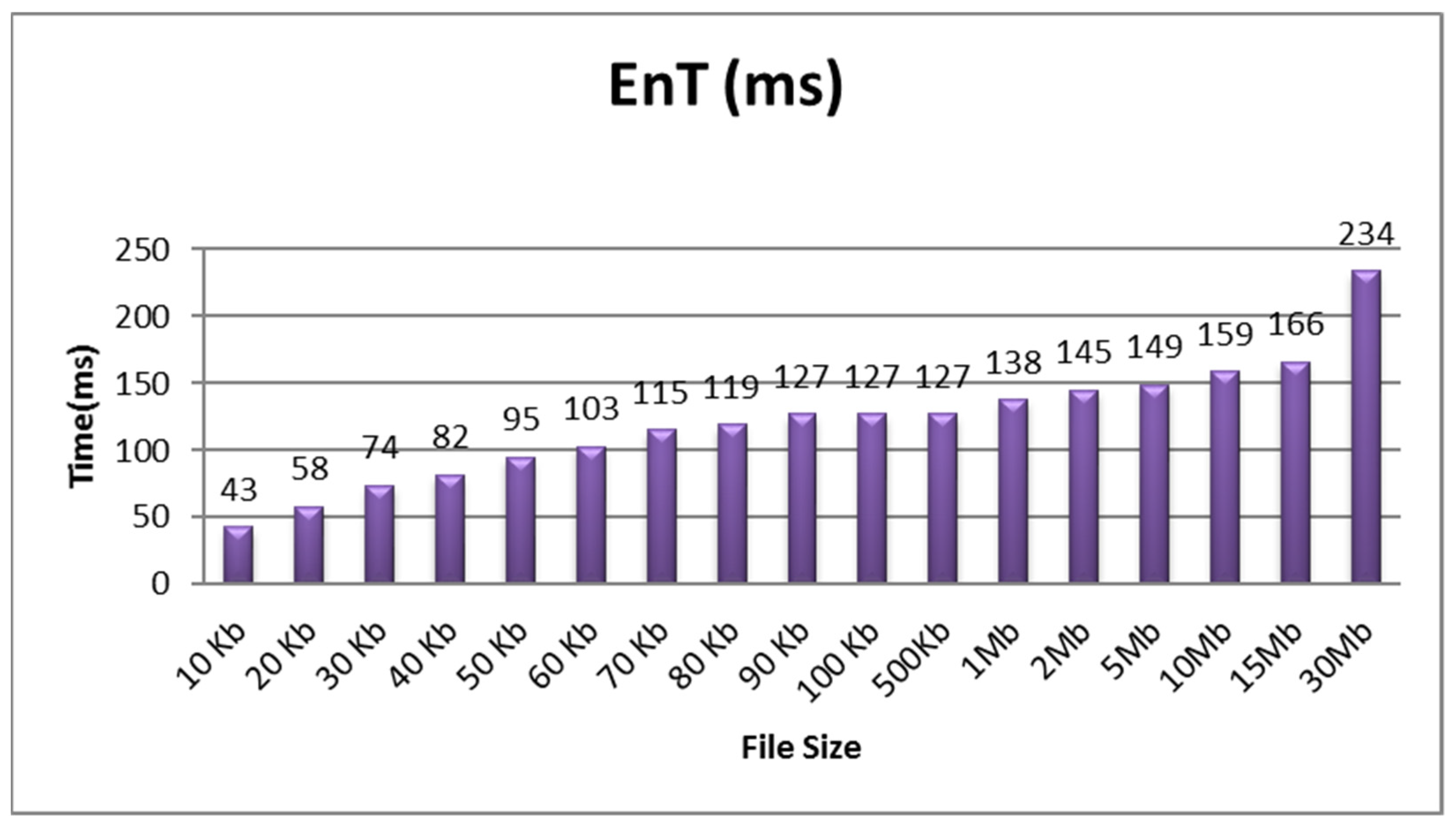
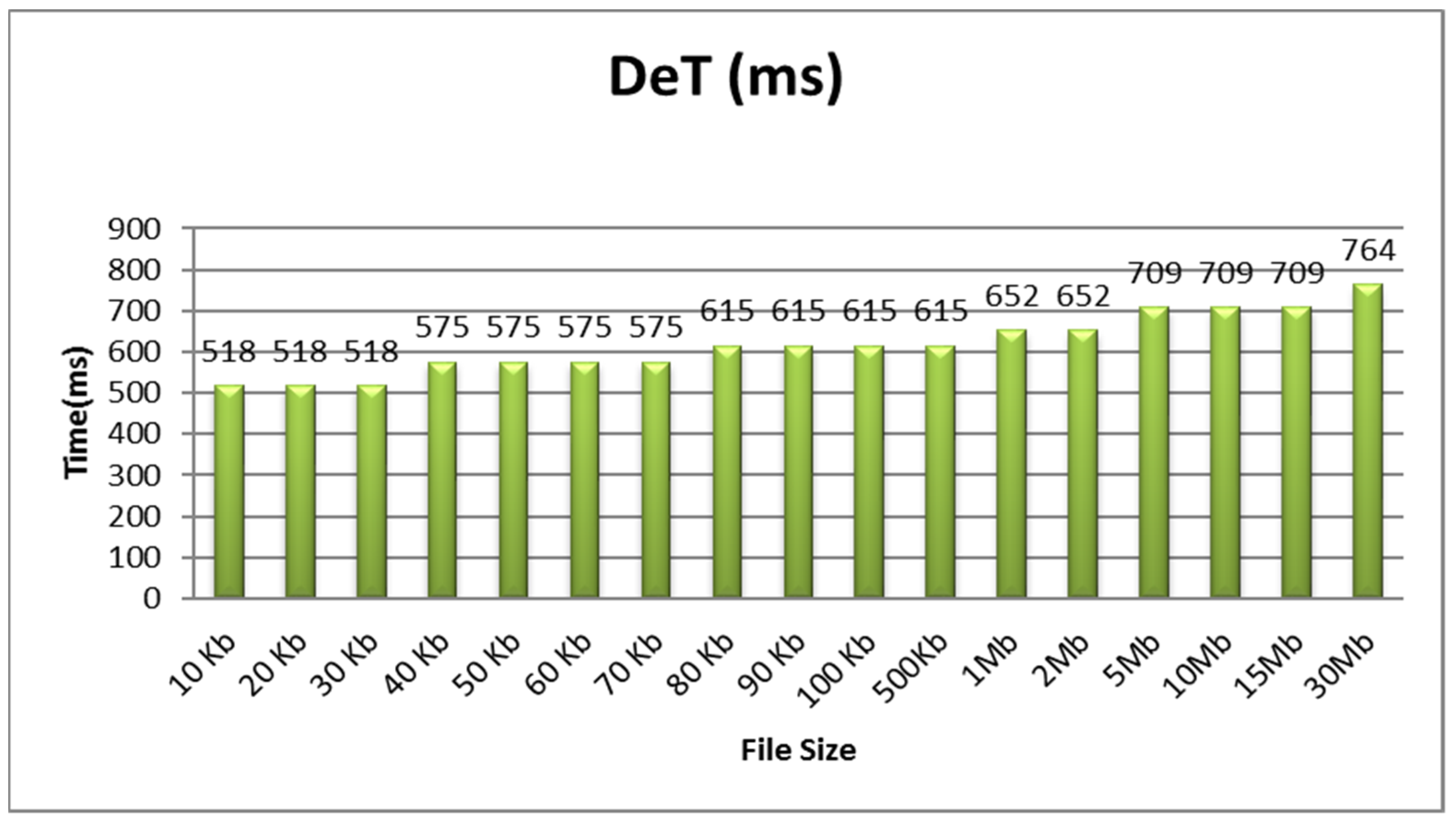
| Parameters | Existing [5] | Proposed—ECRM | Existing [22] |
|---|---|---|---|
| Signature Efficiency | O(λβ log2 n) | ||
| Computation Cost | cMulExpG1 | O(β) | |
| O(β log n) | |||
| m(lq + lname + lG1) | β log n + O(λ log n) |
Disclaimer/Publisher’s Note: The statements, opinions and data contained in all publications are solely those of the individual author(s) and contributor(s) and not of MDPI and/or the editor(s). MDPI and/or the editor(s) disclaim responsibility for any injury to people or property resulting from any ideas, methods, instructions or products referred to in the content. |
© 2023 by the authors. Licensee MDPI, Basel, Switzerland. This article is an open access article distributed under the terms and conditions of the Creative Commons Attribution (CC BY) license (https://creativecommons.org/licenses/by/4.0/).
Share and Cite
A, R.; Kautish, S.; Juneja, S.; Mohiuddin, K.; Karim, F.K.; Elmannai, H.; Ghorashi, S.; Hamid, Y. Enhanced Cloud Storage Encryption Standard for Security in Distributed Environments. Electronics 2023, 12, 714. https://doi.org/10.3390/electronics12030714
A R, Kautish S, Juneja S, Mohiuddin K, Karim FK, Elmannai H, Ghorashi S, Hamid Y. Enhanced Cloud Storage Encryption Standard for Security in Distributed Environments. Electronics. 2023; 12(3):714. https://doi.org/10.3390/electronics12030714
Chicago/Turabian StyleA, Reyana, Sandeep Kautish, Sapna Juneja, Khalid Mohiuddin, Faten Khalid Karim, Hela Elmannai, Sara Ghorashi, and Yasir Hamid. 2023. "Enhanced Cloud Storage Encryption Standard for Security in Distributed Environments" Electronics 12, no. 3: 714. https://doi.org/10.3390/electronics12030714
APA StyleA, R., Kautish, S., Juneja, S., Mohiuddin, K., Karim, F. K., Elmannai, H., Ghorashi, S., & Hamid, Y. (2023). Enhanced Cloud Storage Encryption Standard for Security in Distributed Environments. Electronics, 12(3), 714. https://doi.org/10.3390/electronics12030714







